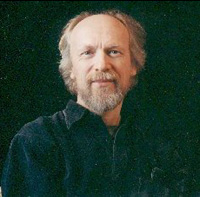John Steffler (1947-)
An Ontarian by birth, who travelled Europe for several years, John Steffler moved to Newfoundland in 1974 to assume a summer teaching position at Memorial University. He “fell in love with Newfoundland” (“Grey Islands Subject of Book”, 30) and made it his home. He finds the history and altering and abandoning of traditions “compelling and fascinating” (“Grey Islands Subject of Book”, 30). He moved across the island to Corner Brook in the fall of 1974 to teach at Sir Wilfred Grenfell College. A graduate of the University of Toronto (B.A.) and the University of Guelph (M.A.), he is married to noted children’s book illustrator, Shawn Steffler, and has two children, Edith and Alban.

The Grey Islands
Steffler has published five collections of poetry. Most relevant to the literature of Newfoundland is The Grey Islands (1985). After visiting the Grey Islands twice and spending time with fishermen in the area near Conche, Steffler’s collection is a recreation of the abandonment in the 50s and 60s of the community of Grey Islands as seen through the perspective of the mainland town planner, a fictional character who explores the islands and arrives about decisions concerning his future. The eclectic collection incorporates a vast range of forms and styles, from anecdotes, documents, ghost stories, lyrics, and field notes to reflect on the living and dead people who inhabited the islands’ harsh landscape and bountiful solitude.
Excerpt from “The Grey Islands”
driving all day. mist and rain. the highway
deserted. miles of bunchbacked spruce. grey sea
butting the rock.
along the mud road to Roddickton. Dark backwoods
feeling. bush on all sides. gravel pits. old
machines along the way.
hardly a soul.
Flights of Magic
Steffler’s only children’s book, Flights of Magic (1987), is a story to “celebrate the power of imagination and the co-existence of real and imaged experience in everyday life.” The central character, Ruth, moves to a new neighbourhood and in order to overcome her loneliness from the move, she engrosses herself in the book, Flights of Magic. A parrot, however, takes the book, and Ruth travels on a number of adventures to win the book back, which she then gives to another girl.
The Afterlife of George Cartwright
Steffler also accomplished success as a novelist. The Afterlife of George Cartwright (1992) is narrated by the ghost of George Cartwright (1738-1819) who sailed to Newfoundland in 1768 after a mediocre military career. Two years later he set up a trading business in Labrador, which forms the setting of Steffler’s novel. Based off Cartwright’s journal (where he added six imagined years to its record) Steffler brings Cartwright into the present day by fictionalizing his life based on Cartwright’s words, historical accounts, and descriptions. Mixing European colonization with history, folklore and the Labrador landscape, Steffler explores Cartwright’s vision as a man enthralled yet bewildered by Labrador, a man who falls prey to his ambitions, despite his opportunities.
Accomplishments
His diverse accomplishments include the Newfoundland and Labrador Book Award for Helix (2003), Nomination for the Craig L. Dobbin Poetry Award (2003), Atlantic Poetry Prize for That Night We Were Ravenous (1999), Provincial Book Award for That Night We Were Ravenous (1999), Smith Books/Books in Canada First Novel Award for The Afterlife of George Cartwright (1999), Writer in Residence, Concordia University (1999), Shortlisted for the Governor General’s Literary Award (1992), Newfoundland and Labrador Arts Council Artist of the Year Award (1992).
Excerpt from “Primitive Renaissance”
We travel south to a shore crackling
and aromatic, necklaced in salt,
then to an island,
white,
giddy in space, where shoes
shirts, jeans wander off on their own and skin
remembers its language, bounds
into conversation with the world, skilled in a grammar it
never learned in the north,
sniffing,
yanking us off the path. Every object it meets
is its physical kin,
has a shapely ass
or anecdotes, invitations to meals.
At the sun-scarred table, heat
rustles the eucalyptus leaves overhead, pine
and oregano spirits brushing us.
My fingers find the cup’s tiny
shape deep in its own white glare. Inspired,
we plan a high culture built
low to the ground,
a primitive renaissance.




